SharePoint Employee Directory Software -Employee Directory 365
Looking to manage your employee listings? SharePoint Employee Directory 365 is your solution for fully automated employee directory software, easily integrating with Microsoft tools. Minimizes manual tasks, simplifies employee identification, connects effortlessly with other Microsoft applications, and boosts overall productivity

Trusted by 7100+ businesses from 152 countries

















Now Employee Directory 365 App is Available on Microsoft Teams
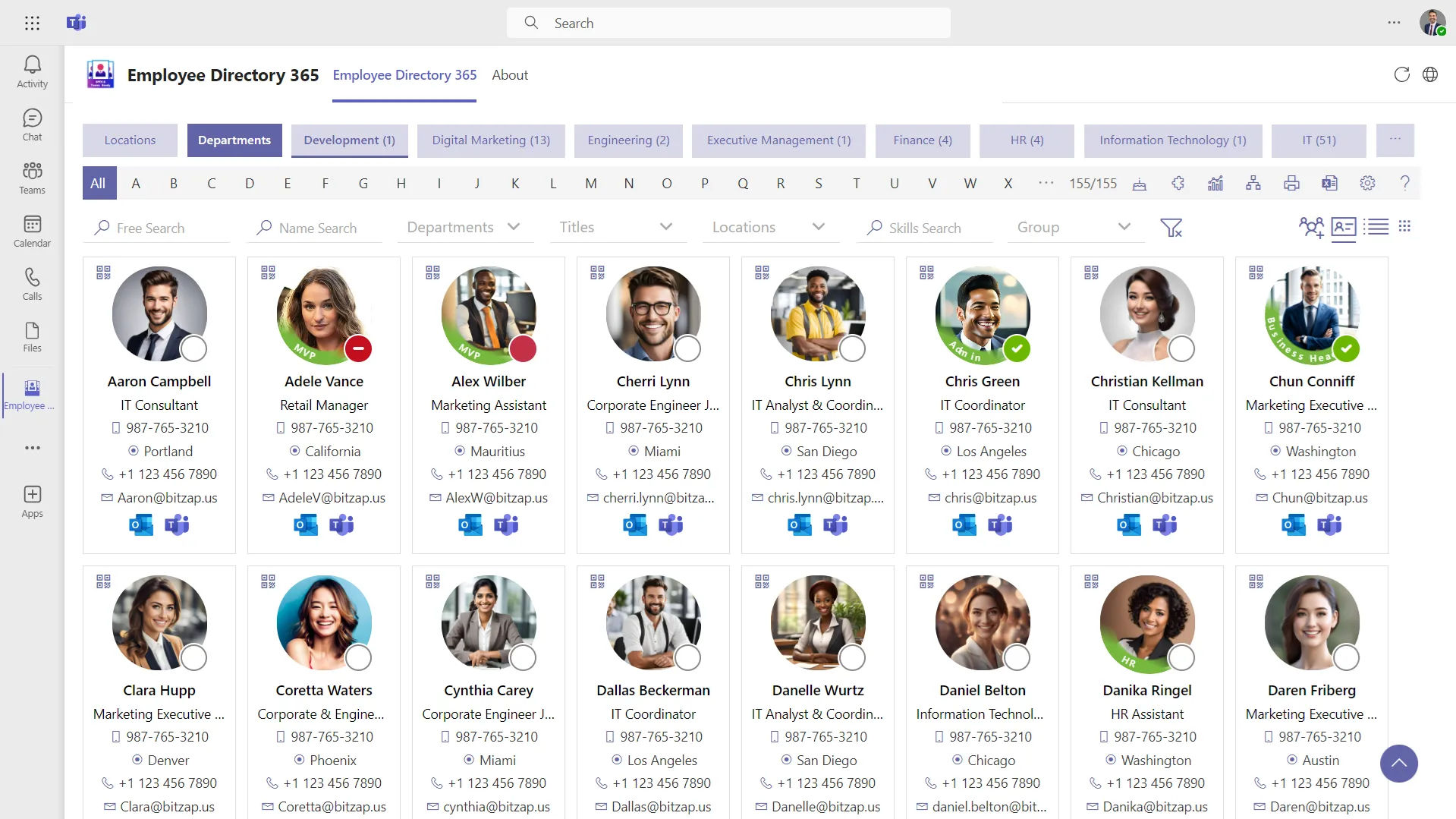
Employee Directory Software with Microsoft 365 Integration
- Innovative Integration: Seamlessly integrates with Microsoft 365, especially within SharePoint and Teams.
- Central Hub: Transforms the employee directory into a central component of your digital workspace.
- Instant Access: Provides quick access to crucial employee information, enhancing the user experience.
- Unified Workflow: Reduces platform-switching, fostering a cohesive and efficient digital workflow to boost productivity.
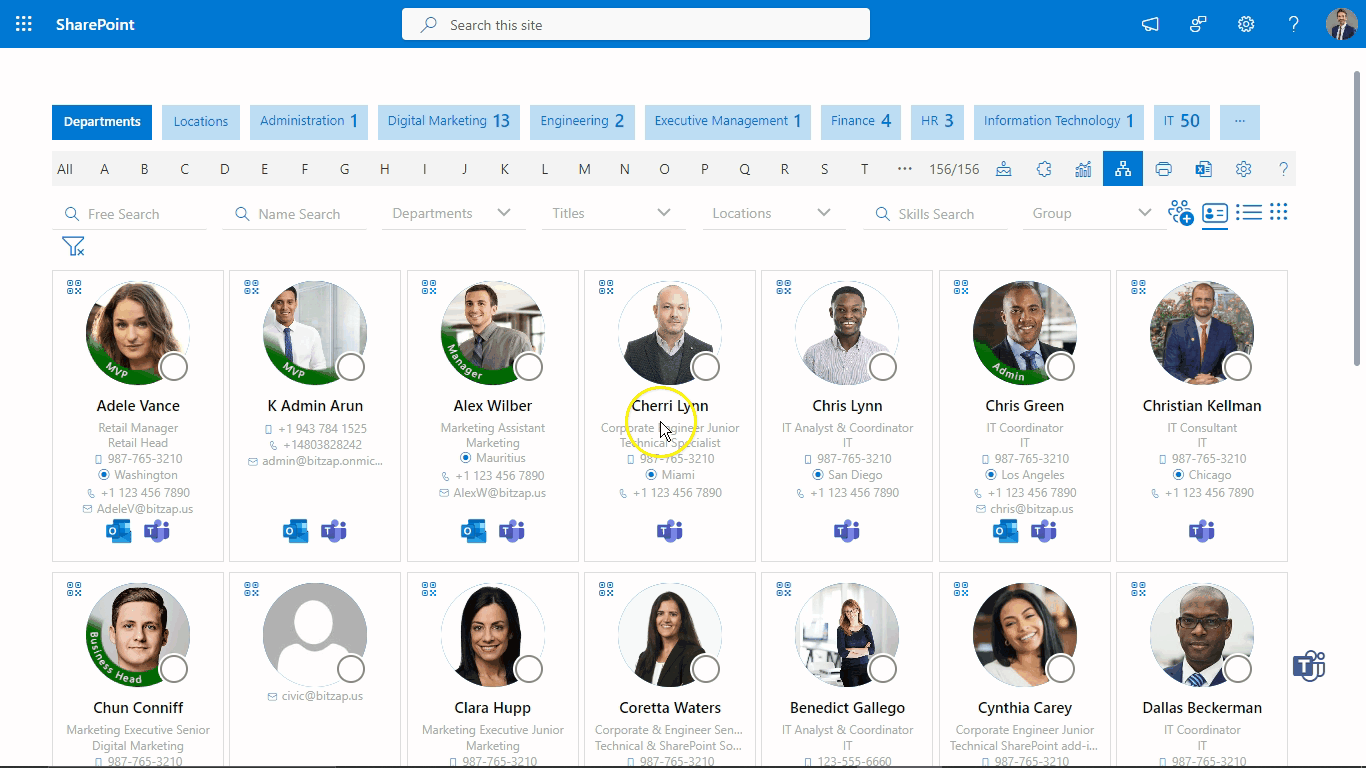
Enhanced Search Capabilities: Microsoft Employee Directory
- Powerful Search & Filtering: Quickly locate colleagues using names, departments, skills, and custom attributes.
- Advanced Features: Personalize searches to refine results and improve accuracy.
- Large Organization Benefits: Simplifies finding contacts in large networks, reducing the complexity of navigating organizational hierarchies.
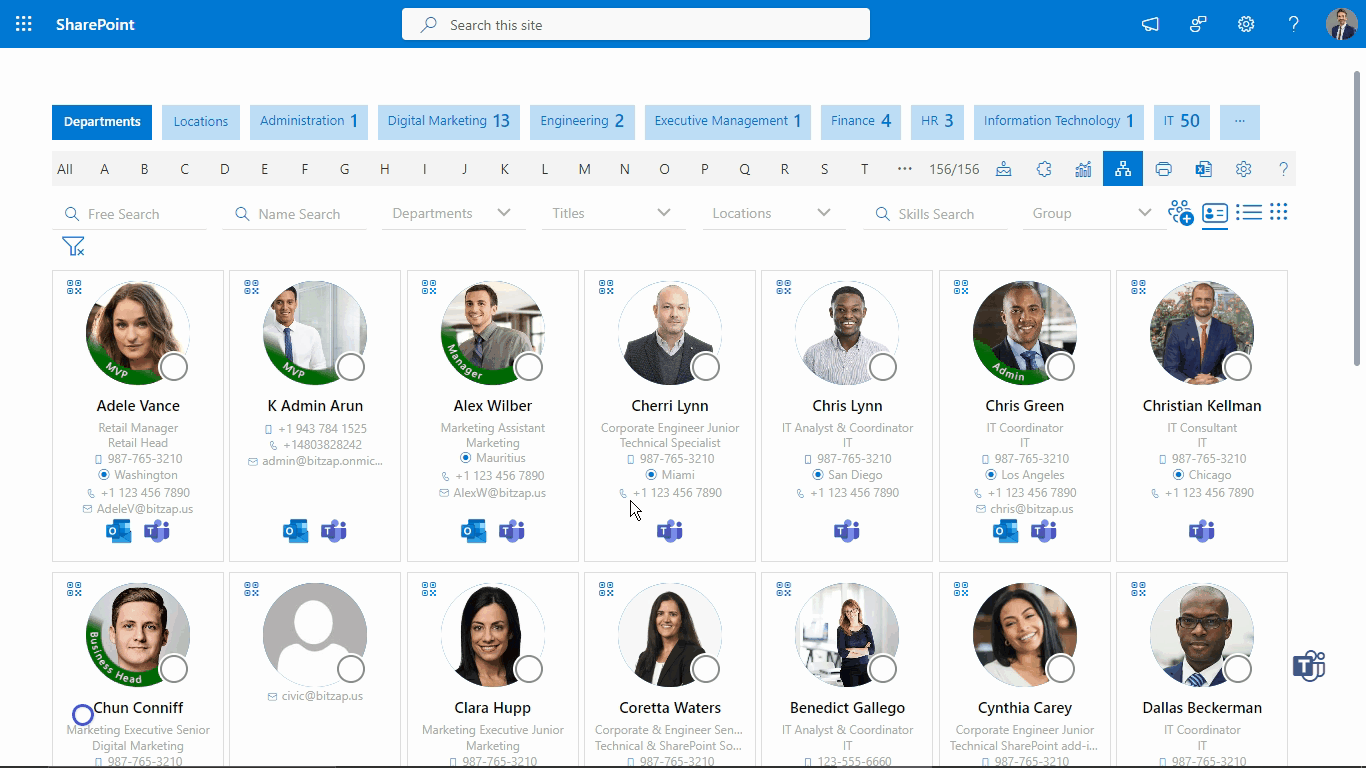
Interactive Organizational Visualizations
- Interactive Organizational Charts: Provides dynamic and visually appealing charts that clarify company hierarchy, team structures, and reporting lines.
- Enhanced Understanding: Helps team members quickly grasp their position within the organization.
- Strategic Optimization: Enables managers to design and optimize team structures effectively.
- Improved Collaboration & Planning: Simplifies complex relationships into clear visuals, supporting better strategic planning and decision-making.
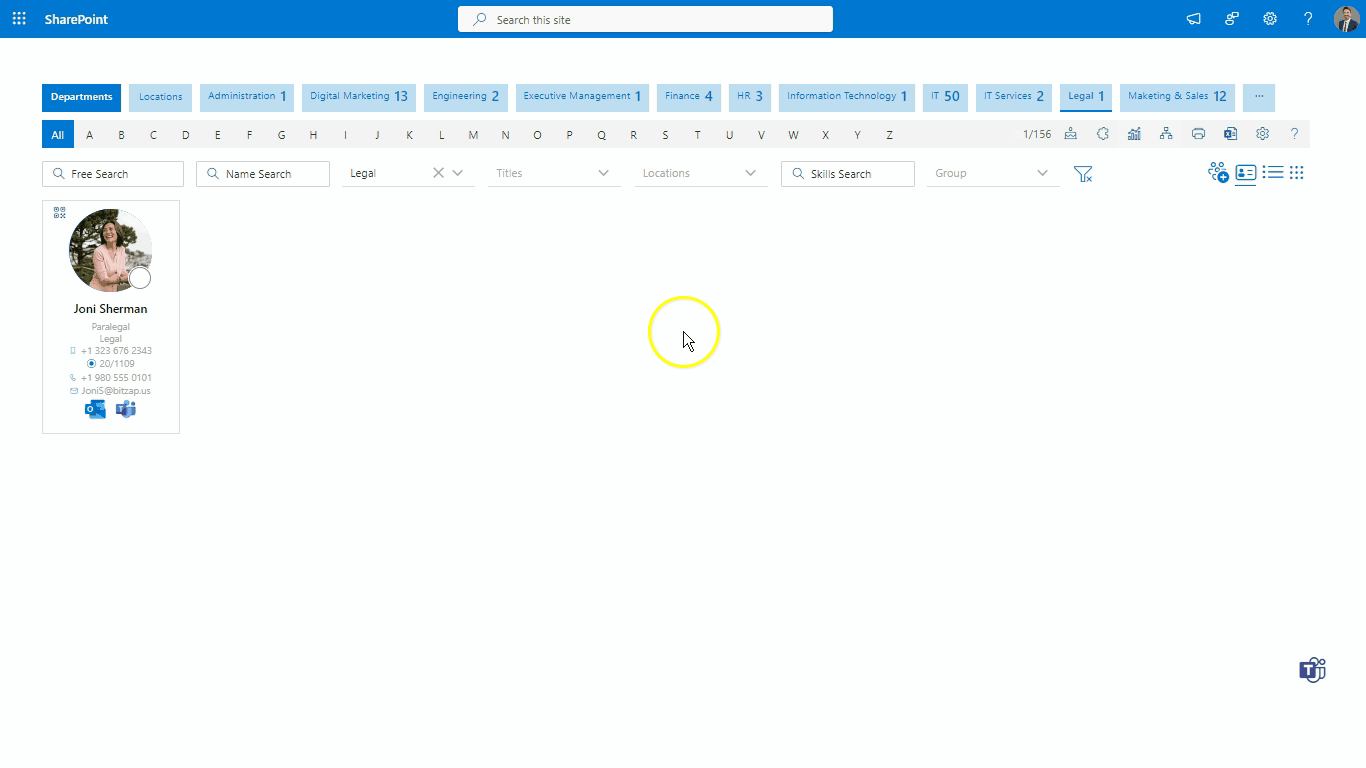
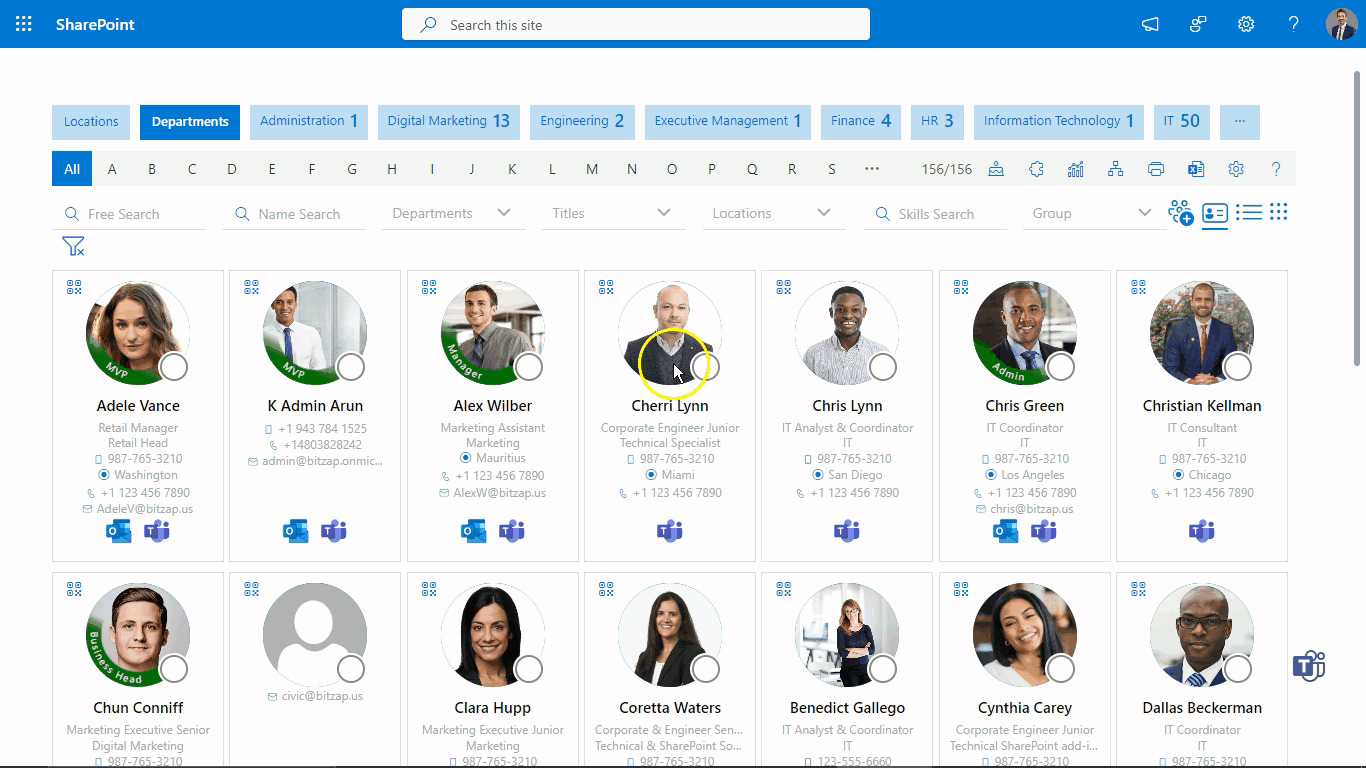
Real-Time Data Synchronization: Employee Directory Software
- Accurate Data: Guarantees precise and consistent employee information.
- Real-Time Synchronization: Syncs instantly with Microsoft 365 for up-to-date records.
- Dynamic Integration: Reflects updates or changes in the directory immediately.
- Up-to-Date Records: Keeps employee data current and accurate.
Enhanced Confidentiality and Security: Employee Directory 365
- Advanced Security: Employee Directory 365 features rigorous security measures and controls.
- Privacy Compliance: Adheres to legal and organizational standards for data protection.
- Microsoft 365 Integration: Ensures employee data remains secure within your Microsoft 365 tenant.
- Unauthorized Access Protection: Guards against unauthorized access to sensitive information.
_9wJphPYCa.gif?updatedAt=1720500232285)
Why SharePoint Employee Directory 365?
Unified Information
Maintain a detailed record of employee information, including contact details, job roles, department affiliations, and skills.
User-Friendly
Provide an easy-to-navigate and highly user-friendly interface designed specifically for both administrators and employees.
Fully Automated
Automatically update employee profiles with any changes in role, department, or personal and professional contact information.
Connect Employee Directory 365 with your other Apps
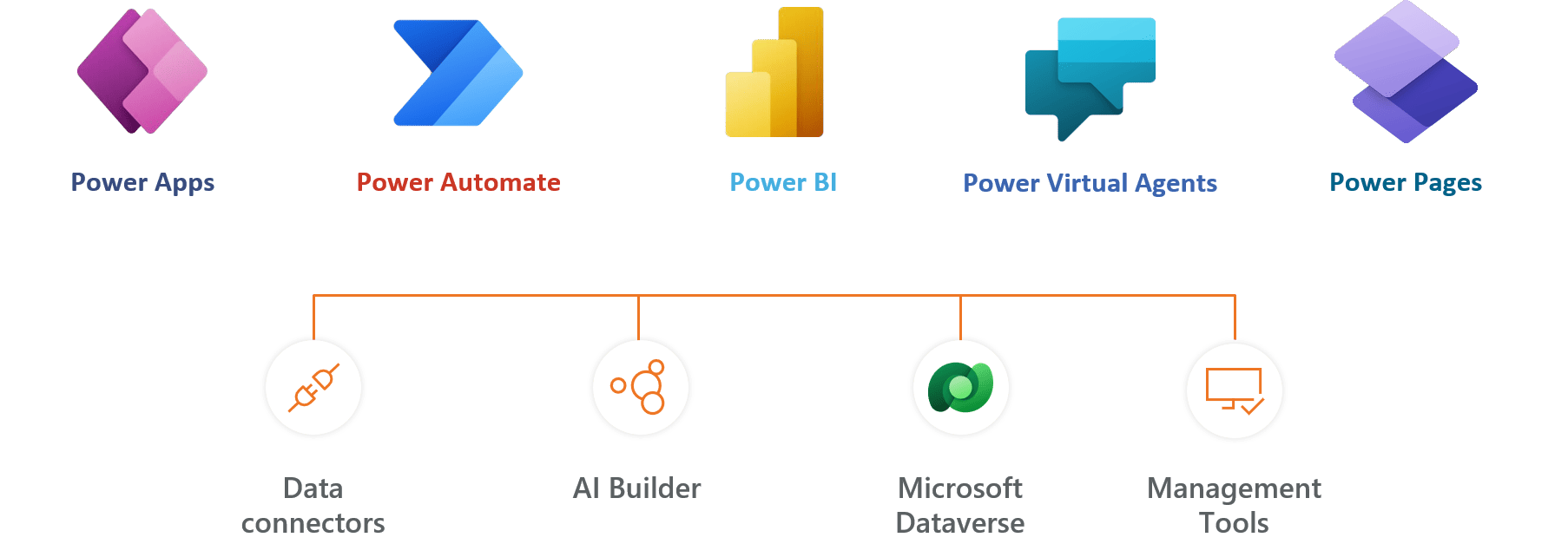
Employee Directory 365 Plans
Standard
$4999
per month, billed yearly
Standard Plan Features
- 50 users
- Free updates via Microsoft store
- Alphabet filtering
- 1 Exclude options
- 1 Search options
- Mobile responsiveness
- Auto sync data from M365
- Optional classic support@ $30/month
Plus
$9999
per month, billed yearly
Everything in Standard and…
- Up to 150 users
- Standard support unlimited worth of $49/month included.
- Multiple Exclude options.
- Multiple Search options
- Choice to hide user properties.
- Configure SIP / Call protocols
- Multiple profile image sync
- Modern SharePoint App
- MS Teams App
- Advance top bars filters
- Custom fields
- Custom column search
Premium
$14999
per month, billed yearly
Everything in Plus and…
- Upto 200 users
- Add-on $50 for every 100 users
- Standard support unlimited @59/month included.
- Free updates with support
- Sync Active directory attributes.
- Online presence with extended status
- Birthday and anniversary notifications
- Custom logo
- Organization chart
- Custom quick link
- QR Code
- Hide Mobile number selectively.
- Custom return page link
- Available in 10+ languages
- Advance top bars filters
- Multiple people manager
- Configure pro-nouns
Enterprise
$24999
per month, billed yearly
Everything in Premium and…
- Upto 300 users
- Add-on $50 for every 100 users
- Standard support unlimited @79/month included.
- Filters - About me, Projects, Skills
- Filters - School and Hobbies
- Quick link to custom profile pages
- Executive Assistant relationship
- Online presence with extended status
- Calendar - free / busy information
- Profile Imaged with text frames
- Import users using CSV
- Exclude Bulk Shared Mailboxes
- Guest user
- Dashboard
- Dedicated account manager
- Quick Teams web chat within employee directory
- Request to change personal info
- Employee spotlight
- Intranet birthday & anniversary add ons
- Non Microsoft 365 users
- Automatic reply status from Outlook
- Map with your own employee data
- One free customization*
Clients Speak
What's more ?
Free Support
Get 24/5 email support for all plans at no additional cost.
Premium Support
Avail enhanced support and get your questions answered faster. Learn more
1000+ users ?
*One Free Customization (upto 4 hours)
Frequently Asked Questions
How to create an employee directory in SharePoint?
To create an employee directory in SharePoint:
1. Open Your SharePoint Site: Open your SharePoint site where you want to create the directory.
2. Create a List:
o Click + New > List and name it “Employee Directory.”
3. Add Details:
o Add columns for Name, Job Title, Department, Phone, Email, etc.
4. Fill the Directory:
o Enter employee details or import them from Excel.
5. Display the Directory:
o Add the list to a page using the List Web Part and customize the view.
Your SharePoint employee directory is now live and ready to use!
Does Microsoft have an employee directory?
Microsoft 365 includes tools for an employee directory:
- Microsoft Teams: Search for colleagues by name or department.
- Outlook: Use the Global Address List for contact details.
- Delve: Explore detailed profiles, org charts, and shared documents.
For more advanced features, tools like Employee Directory 365 provide:
- Microsoft Teams: Search for colleagues by name or department.
- Outlook: Use the Global Address List for contact details.
- Delve: Explore detailed profiles, org charts, and shared documents.
This makes managing and finding employees simple and efficient.
How to find SharePoint directory?
To find a directory in SharePoint, such as an employee or document directory, follow these steps:
1. Go to Your SharePoint Site:
o Open the SharePoint site where the directory is stored.
2. Search in Site Contents:
o Click the Settings gear icon (top-right corner) and select Site Contents.
o Look for a list or library named after the directory (e.g., “Employee Directory”).
3. Use the Search Bar:
o Use the Search bar at the top of the SharePoint page.
o Enter keywords like “directory” or “employee directory” to locate it quickly.
4. Check for Links or Pages:
o Some directories might be displayed on a custom page or as a link in the site’s navigation menu.
5. Ask the Admin:
o If you can’t find the directory, your SharePoint administrator can provide access or guidance.
This should help you locate the directory you need!
What is employee directory?
A SharePoint employee directory 365 is a central hub where you can find information about everyone in your organization.
Key Features:
- Basic Information: Names, job titles, departments, and contact details (phone, email, etc.).
- Organizational Structure: Reporting hierarchy and team associations.
- Profiles: Additional details like photos, work locations, and expertise.
Purpose:
- To improve communication and collaboration across teams.
- To help employees quickly find and connect with the right person for specific tasks or queries.
An employee directory can be online by using it in SharePoint or Microsoft Teams. It is an effective tool making it easy to access and use.
What is a SharePoint Employee Directory?
A SharePoint Employee Directory is a tool integrated with Microsoft SharePoint that provides a centralized platform for managing and accessing employee information. It offers features such as advanced search, organizational charts, and real-time data synchronization to enhance employee identification and collaboration.
How does the employee directory application enhance productivity?
The Employee Directory application enhances productivity in several keyways:
1. Quick and Efficient Employee Searches
Advanced Search Capabilities: Users can swiftly locate employees using various criteria such as name, department, skills, job titles, and custom properties. This minimizes the time spent searching for contacts and information.
Faceted Filters: Offers precise filters to narrow down search results, enabling users to find the right person or team quickly.
2. Streamlined Access to Information
Centralized Data: Provides a single, organized platform for all employee information, reducing the need to search through multiple sources.
Real-Time Updates: Ensures that information is current and accurate by automatically syncing with Microsoft 365, reducing the effort required to manually update records.
3. Enhanced Collaboration
Integrated Communication Tools: Facilitates direct communication with colleagues through integrated email, chat, or other messaging systems within the directory.
Presence Information: Displays real-time availability of employees, making it easier to find and connect with colleagues who are currently online or available.
4. Visual Organizational Insights
Interactive Organizational Charts: Provides visual representations of team structures and reporting lines, helping users understand organizational dynamics and quickly find the right contact.
Role and Team Context: Allows employees to see how individuals fit within the organization, aiding in identifying relevant expertise and points of contact for projects.
5. Seamless Integration with Microsoft 365
Unified User Experience: Integrates smoothly with SharePoint, Teams, and other Microsoft 365 applications, allowing users to access directory information without switching between platforms.
Embedded Directory Access: Embeds the directory within Microsoft 365 applications, providing context-relevant information at users’ fingertips during tasks such as project management or team collaboration.
6. Reduction of Redundant Tasks
Automated Data Management: Reduces manual data entry and maintenance tasks by automating updates and synchronization with existing HR systems and databases.
Consistency Across Platforms: Ensures consistency in employee data across all integrated systems, minimizing errors and discrepancies.
7. Enhanced Onboarding and Employee Experience
New Hire Introduction: Helps new employees quickly familiarize themselves with colleagues and team structures, accelerating their integration into the company.
User-Friendly Interface: Provides an intuitive and easy-to-use interface, ensuring that employees of all technical levels can effectively navigate and use the directory.
8. Scalability and Adaptability
Customizable Profiles and Fields: Allows organizations to tailor the directory to their specific needs, including adding custom fields and attributes that are relevant to their operations.
Support for Large Organizations: Efficiently handles extensive employee lists and complex organizational hierarchies, making it ideal for large enterprises.
9. Data-Driven Decision Making
Analytics and Reporting: Provides insights into directory usage, search trends, and employee skills, helping management make informed decisions regarding resource allocation and team composition.
Talent Management: Facilitates identification of internal expertise and skill gaps, aiding in talent development and strategic planning.
10. Improved Data Security and Compliance
Secure Access: Ensures that only authorized users can access sensitive employee information, thereby maintaining data integrity and privacy.
Compliance Adherence: Supports compliance with data protection regulations and organizational policies, reducing the risk of data breaches and legal issues.
By providing a centralized, integrated, and user-friendly solution, the Employee Directory application enhances productivity across various dimensions, from daily operations to strategic decision-making.
How frequently is the data updated in the Microsoft Employee Directory?
The data in the Microsoft Employee Directory, particularly when integrated with SharePoint and Microsoft 365, is updated in real time. Here’s how this continuous updating enhances the system:
Real-Time Synchronization
· Instant Updates: Changes made in any connected Microsoft 365 application, such as SharePoint, Outlook, or Teams, are immediately reflected in the employee directory. This includes updates to contact information, job titles, department affiliations, and more.
· Automated Data Syncing: The directory employs dynamic connectivity to ensure that all employee data is synchronized across platforms without requiring manual intervention. This automation maintains the accuracy and consistency of the information available.
Benefits of Real-Time Updates
· Current and Accurate Information:
o Ensures that users have access to the most recent employee details, reducing the risk of outdated or incorrect information.
o Reflects organizational changes, such as new hires, role changes, or departures, as they happen.
· Efficient Communication:
o Facilitates more effective communication and collaboration by providing up-to-date contact information and presence statuses.
o Helps users quickly identify the right contacts for their needs based on the latest data.
· Seamless Integration:
o Works smoothly with other Microsoft 365 applications, ensuring that data consistency is maintained across the suite.
o Eliminates the need for repeated data entry or manual updates in multiple systems.
· Improved Data Integrity:
o Reduces discrepancies and ensures that all users are working with the same, accurate information.
o Minimizes the administrative burden associated with maintaining multiple data sources.
· Enhanced User Experience:
o Provides a seamless and intuitive experience for users, who can trust that the information they see is always up-to-date.
o Supports a more cohesive digital workflow by keeping data aligned across various tools and platforms.
Specifics of Data Update Mechanisms
· Directory Sync Services: Uses Microsoft’s directory synchronization services (such as Azure AD Connect) to sync on-premises directories with Azure Active Directory, which the employee directory can then leverage.
· API Integrations: Utilizes APIs to fetch the latest data from Microsoft 365 services, ensuring that changes are captured and applied in real time.
· User Actions: Updates resulting from user actions, like profile edits or team reassignments in Microsoft 365 applications, are reflected immediately in the directory.
The Microsoft Employee Directory leverages real-time synchronization to ensure that data is always current. This real-time updating mechanism is crucial for maintaining the accuracy and relevance of employee information, supporting efficient communication, and enhancing overall productivity within the organization.
How does the employee directory app handle large organizations?
The employee directory app, particularly when designed for large organizations, typically employs several strategies to effectively manage and handle the complexities inherent in such environments:
Scalability
· Robust Infrastructure:
o The directory app is built on a scalable architecture capable of handling large volumes of data and high user traffic without performance degradation.
· Optimized Search and Navigation:
o Advanced search capabilities allow users to quickly locate individuals within the organization using various filters such as name, department, skills, or location.
Customization and Configuration
· Tailored Profiles:
o The directory supports customizable employee profiles, allowing organizations to include specific fields and attributes that are relevant to their operations.
· Role-Based Access Control:
o Implementing role-based access control (RBAC) ensures that users only have access to the information and functionalities that are relevant to their roles and responsibilities.
Integration and Compatibility
· Integration with Enterprise Systems:
o The directory integrates seamlessly with other enterprise systems and applications, such as HR management software, ERP systems, and communication tools.
· Support for Multiple Locations and Hierarchies:
o Large organizations often have multiple offices or divisions spread across different geographic locations.
Performance and User Experience
· Optimized Performance:
o The app is designed to deliver fast response times and smooth performance, even when handling extensive data queries or simultaneous user requests.
· User-Friendly Interface:
o A clean and intuitive user interface (UI) ensures that employees can easily navigate and use the directory app, regardless of their technical proficiency.
In essence, the employee directory app for large organizations is designed to be scalable, customizable, and performance driven. It aims to simplify access to employee information, foster collaboration across diverse teams, and support organizational efficiency through robust data management and integration capabilities.
How is a staff contact list beneficial for an organization?
A staff contact list offers several benefits:
- Easy Communication: Facilitates quick and direct communication between employees and teams.
- Organization-wide Access: Provides all employees with access to contact information, promoting collaboration and teamwork.
- Efficiency: Reduces the time spent searching for contact details, enhancing overall productivity.
- Emergency Preparedness: Ensures that employees can reach out to colleagues swiftly during urgent situations.



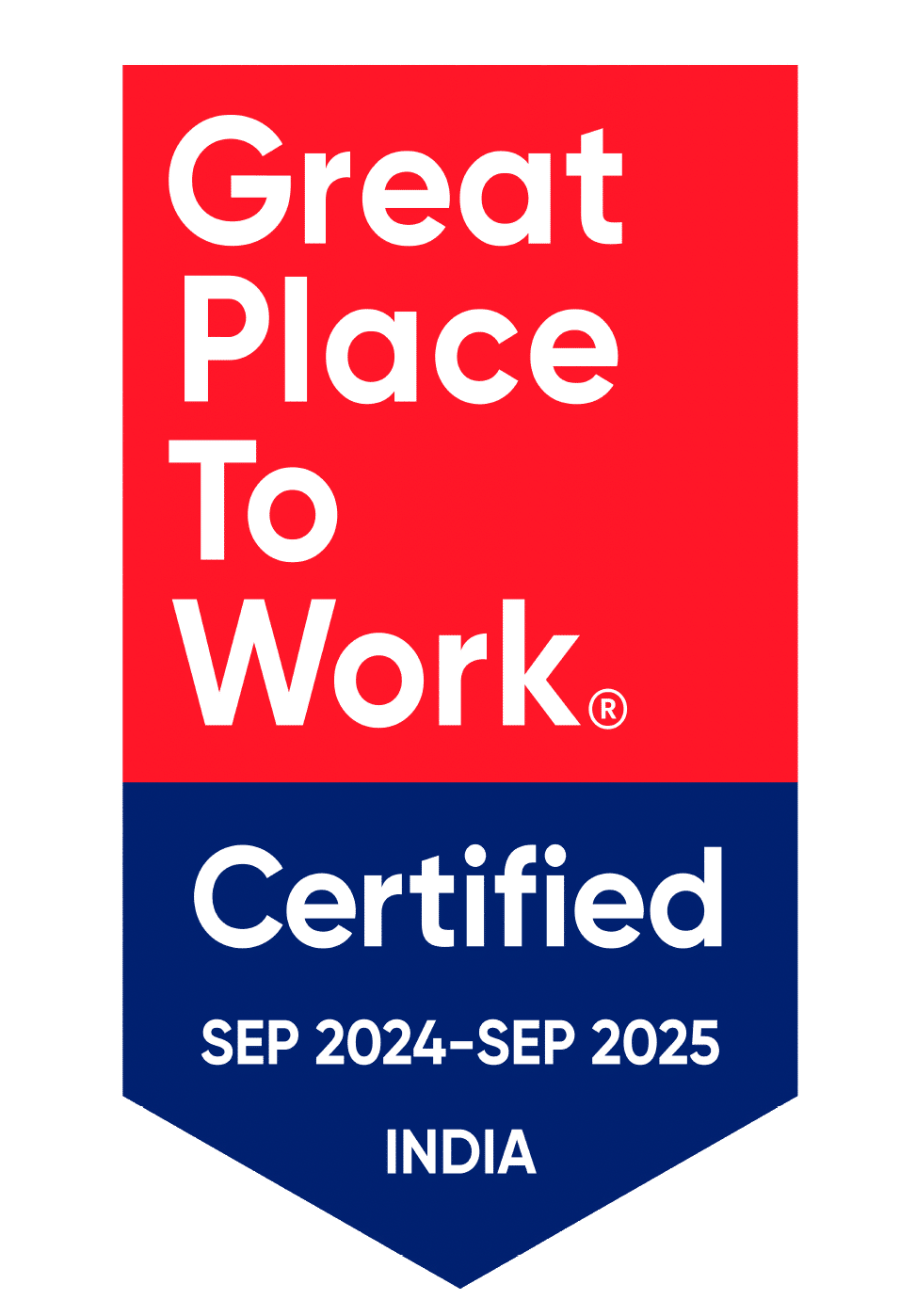





_Rapo0hRMBy.png)










